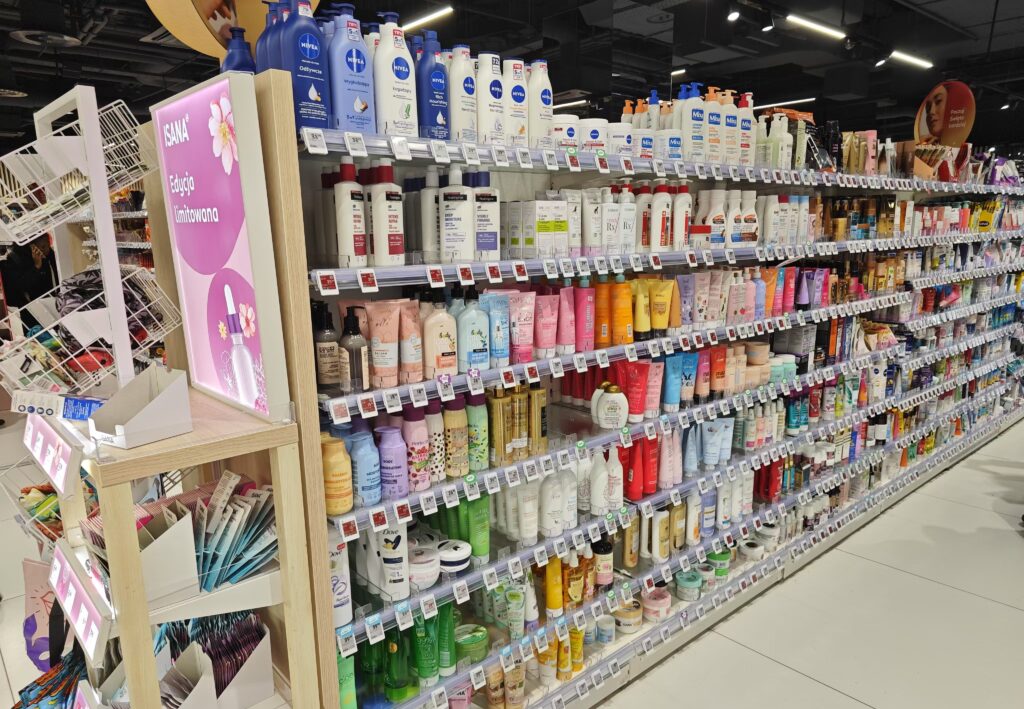Introduction
In today’s hyper-competitive retail landscape, every second—and every cent—counts. Imagine a world where your supermarket shelves update prices in real-time, eliminating pricing errors, slashing labor costs, and enhancing the customer experience all at once. Sounds futuristic? It’s happening right now with Electronic Shelf Labels (ESLs).
Gone are the days of manually swapping out paper price tags, risking costly mispricing, and losing customers due to checkout discrepancies. With a simple digital transformation, supermarkets are revolutionizing the way they operate—boosting efficiency, reducing environmental waste, and even leveraging AI-powered analytics to optimize pricing strategies dynamically.
But that’s just the beginning. The impact of ESLs extends far beyond automation; it’s about creating a seamless, smarter, and more profitable shopping environment. Whether you’re a retail executive, a store owner, or an industry innovator, the benefits of adopting this technology are too compelling to ignore. Let’s dive into the 10 game-changing advantages that ESLs bring to modern supermarkets. 🚀

1. Real-Time Price Updates: No More Manual Changes
Speed and Accuracy: No More Pricing Headaches
Imagine walking into a supermarket where every price tag updates automatically—no delays, no human errors, no inconsistencies. With electronic shelf labels (ESLs), supermarkets eliminate the tedious process of replacing paper price tags manually.
Here’s why this matters:
✅ Instant Updates Across All Locations – Whether a store has 10 or 1,000 branches, pricing changes happen in real-time, ensuring uniformity across the board.
✅ Error-Free Adjustments – No more mismatched price tags and checkout surprises. Every displayed price remains accurate, reducing customer complaints.
It’s a game-changer for retailers. By eliminating the need for employees to manually update thousands of tags, businesses free up time for more valuable tasks—like improving customer service and store efficiency.
Seamless Synchronization with POS Systems
Ever been frustrated by seeing one price on the shelf, only to be charged a different amount at checkout? That’s a surefire way to lose customer trust.
With a direct link between ESLs and point-of-sale (POS) systems, supermarkets eliminate this issue entirely. Every price update reflects instantly across all platforms, ensuring that what customers see is what they pay.
📌 No more pricing discrepancies.
📌 No more frustrated shoppers.
📌 No more lost sales due to outdated price tags.
Automated Promotions & Discounts
Picture this: A supermarket wants to run a flash sale on beverages for the next three hours. Without electronic shelf labels, employees scramble to print new labels, replace them manually, and hope they remember to switch everything back once the sale ends.
Now, imagine the same scenario with ESLs.
✨ Prices adjust automatically at the scheduled time.
✨ Discounts activate and deactivate without lifting a finger.
✨ Customers receive real-time notifications through store apps.
This means supermarkets can launch promotions on demand—whether it’s happy hour discounts, weekend deals, or clearance markdowns. It’s pricing agility at its finest.
2. Enhanced Customer Experience: A Smarter Shopping Journey
Clear and Readable Pricing
Shoppers don’t have time to squint at tiny, faded price tags. With high-contrast digital displays, ESLs ensure that every price remains crisp, clear, and easy to read.
🔹 Better visibility under different lighting conditions.
🔹 Larger font sizes for accessibility and inclusivity.
🔹 No more confusion over old and new prices.
Clarity is key in retail. When customers can immediately spot prices, they make faster decisions—boosting sales and improving shopping efficiency.
QR Codes and Product Information at a Glance
Modern shoppers crave information. They don’t just want to know the price; they want details about ingredients, reviews, and sustainability.
With ESLs, each price tag becomes an interactive tool.
📲 Scan a QR code to see product reviews.
📲 Check nutritional details on the spot.
📲 Compare similar products without needing staff assistance.
This empowers shoppers to make informed decisions, leading to higher satisfaction and fewer return hassles.
Guided Navigation for Faster Shopping
Ever wandered through a supermarket looking for one specific item? It’s frustrating, right?
Smart electronic shelf labels integrate with mobile store apps to provide real-time navigation assistance. Customers can:
📍 Search for an item and receive aisle directions.
📍 Locate discounted products with interactive store maps.
📍 Get personalized recommendations based on past purchases.
By streamlining the shopping experience, supermarkets enhance convenience, drive engagement, and encourage repeat visits.
3. Cost Savings on Labor and Operations
Less Manual Work, More Efficiency
Updating thousands of paper price tags? It’s a colossal waste of time.
With ESLs, supermarkets slash labor hours spent on tedious pricing tasks. Employees no longer have to:
❌ Print new labels every time prices change.
❌ Walk aisle after aisle, manually replacing tags.
❌ Double-check for pricing mismatches.
Instead, they focus on customer service, restocking, and sales optimization—driving better results for the business.
Cutting Printing & Paper Costs
Let’s talk numbers.
A typical supermarket updates prices multiple times a week. That means endless sheets of paper, expensive ink cartridges, and constant reprinting.
📉 With digital price tags, these costs vanish.
Supermarkets that switch to electronic shelf labels see massive savings on:
✅ Paper and ink expenses.
✅ Label printing labor.
✅ Distribution and installation costs.
It’s a one-time investment with long-term financial benefits.
Boosting Employee Productivity
Retail success isn’t just about products—it’s about people. Employees perform better when they’re not bogged down by mundane, repetitive tasks.
With ESLs handling pricing updates, supermarket staff can:
✔ Spend more time assisting customers.
✔ Focus on shelf organization and store presentation.
✔ Enhance overall operational efficiency.
A happy, engaged workforce translates to better service, higher sales, and a more pleasant shopping atmosphere.
🔥 And that’s just the beginning! The benefits of electronic shelf labels extend far beyond pricing automation. Up next: how ESLs are revolutionizing sustainability, inventory management, and competitive pricing strategies.
Stay tuned for more game-changing insights! 🚀
4. Sustainability: A Green Solution for Retail
Reduction in Paper Waste: Cutting Down on Unnecessary Consumption
Every year, supermarkets around the world discard millions of paper price tags. Think about the environmental impact—tons of wasted paper, gallons of ink, and endless reprinting.
Now, imagine eliminating that waste entirely.
With electronic shelf labels (ESLs), supermarkets never need to replace paper tags again. Instead, pricing updates happen digitally—no printing, no physical labor, and no environmental harm.
🌱 Less deforestation – A significant reduction in paper consumption.
🌱 No wasted ink – Ink production is energy-intensive and environmentally damaging.
🌱 Lower carbon footprint – Fewer printing needs mean reduced energy use.
By making the shift, retailers contribute to a sustainable future—while also saving on printing costs. It’s a win-win.
Energy-Efficient Technology: A Greener Digital Future
One concern often raised is: Do digital price tags consume excessive energy? The answer is no.
Unlike traditional LCD screens that need constant power, ESLs use e-ink technology—the same tech found in e-readers.
✅ Power is only needed when changing prices.
✅ Battery life lasts years, not months.
✅ No constant electricity consumption.
Supermarkets can upgrade to digital pricing without worrying about energy bills skyrocketing. In fact, the savings from eliminating printing costs outweigh the minimal electricity usage.
Compliance with Eco-Friendly Regulations: Staying Ahead of the Curve
Governments worldwide are tightening regulations on waste management, sustainability, and corporate environmental responsibility.
Retailers who fail to adapt risk falling behind.
✅ Comply with new environmental laws effortlessly.
✅ Improve brand reputation among eco-conscious consumers.
✅ Position the supermarket as a leader in sustainable retail.
Customers today are more aware than ever. They actively support brands that make environmentally responsible choices. By adopting ESLs, supermarkets not only meet regulations but also gain customer trust and loyalty.
📢 Sustainability is no longer optional—it’s essential. Supermarkets that take action now will lead the future of retail.
5. Improved Inventory Management: Smarter, Faster, More Efficient
Real-Time Stock Tracking: No More Guesswork
In a traditional supermarket, inventory management is a nightmare. Employees manually check shelves, estimate stock levels, and often miss crucial shortages.
With electronic price tags, that changes.
🔍 Live inventory tracking – Know exactly how many items are left.
🔍 Automated low-stock alerts – Prevent items from running out.
🔍 Data-driven restocking – Avoid unnecessary overstock.
No more walking down aisles with a clipboard. No more guessing when to reorder. Supermarkets stay one step ahead of demand.
Reducing Overstock and Expiry Issues: Maximizing Profit, Minimizing Waste
Overstocking is just as dangerous as stock shortages. When too much inventory sits on shelves, it ties up capital and risks product expiration.
How do ESLs help?
📊 Smart inventory analytics adjust stock levels based on demand trends.
📊 Perishable goods pricing automation—discounts apply before items expire.
📊 Dynamic restocking suggestions optimize supply chain efficiency.
Instead of watching products sit unsold, supermarkets can clear shelves strategically—keeping profits high and waste low.
Automated Restocking Alerts: Never Run Out of Best-Sellers Again
Shelf gaps don’t just look bad—they hurt sales. If a popular item is missing, shoppers switch stores instead of waiting for a restock.
ESLs eliminate these gaps by providing:
✅ Instant restock notifications for employees.
✅ Real-time demand forecasting.
✅ Better organization in the supply chain.
No more delays in replenishment. No more frustrated customers leaving empty-handed.
With ESLs, stores always stay stocked with the right products at the right time.
6. Competitive Pricing Strategies: Stay Ahead of the Competition
Dynamic Pricing for Maximum Profit: The Future of Supermarket Pricing
Traditional supermarkets struggle with pricing flexibility. When market conditions change—seasonal fluctuations, supply chain disruptions, or competitor discounts—they react slowly.
With ESLs, pricing adapts instantly.
🔄 Increase prices during peak demand.
🔄 Offer automatic markdowns during off-peak hours.
🔄 Optimize promotions based on real-time sales data.
This approach maximizes profitability while keeping customers engaged with relevant deals.
Regional and Seasonal Adjustments: Customized Pricing for Every Location
Supermarkets operate in different regions, each with unique buying patterns. What sells well in one city might not in another.
📌 ESLs enable location-based pricing without manual adjustments.
📌 Supermarkets can align promotions with local demand trends.
📌 Seasonal markdowns apply automatically to clear out holiday inventory.
This ensures that pricing remains optimized—whether it’s summer barbecue season or winter holiday shopping.
Price Matching and Competitor Response: Stay One Step Ahead
Customers love price matching. They want the best deal, and if a competitor offers a better price, they expect supermarkets to adjust accordingly.
With ESLs, supermarkets can:
🔥 Monitor competitor prices in real time.
🔥 Match or beat prices instantly.
🔥 Adjust discounts based on direct competitor data.
This prevents losing sales to rivals while ensuring loyal customers keep coming back.
What’s Next?
✅ We’ve explored how ESLs enhance sustainability, inventory management, and competitive pricing. But there’s more to uncover!
Up next: How ESLs improve security, integrate seamlessly with online shopping, and provide long-term financial benefits for retailers.
📢 Stay with us—there’s even more innovation ahead! 🚀
**Keep Your ESLs Secure with Novaday’s High-Quality Fixings!
Electronic Shelf Labels (ESLs) are only as effective as the fixings that hold them in place. Loose, unstable, or poorly mounted ESLs can lead to pricing errors, disorganization, and a poor customer experience. That’s why Novaday provides precision-engineered ESL fixings designed for maximum stability, durability, and easy installation.
✔ Strong & Secure Hold – No slipping, shifting, or falling labels
✔ Custom-Fit for Major ESL Brands – Universal compatibility
✔ Durable PET Injection and Extrusion Molding – Long-lasting, impact-resistant materials
✔ Easy Installation Options – Clip-on, rail-mounted, and snap-on solutions
✔ OEM & ODM Services – Tailored designs to fit your specific shelving system
💡 Why ESL Fixings Are Essential?
Without reliable mounting solutions, ESLs can fall off, become misaligned, or fail to display prices accurately. A well-secured ESL system ensures professional presentation, operational efficiency, and seamless price updates.
📢 Upgrade your retail display today! Contact Novaday for bulk orders, custom solutions, or distributor partnerships.



